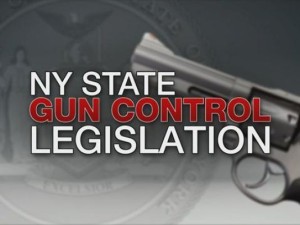Gun prohibitionists have raged since 2008 over the astounding setback they suffered in 2008 with the U.S. Supreme Court’s opinion District of Columbia v. Heller. No sooner had they picked themselves up off the mat than the court delivered the second punch in the form of the 2010 decision McDonald v. Chicago. Heller affirmed the individual right to own guns for self-defense, and McDonald clarified that Heller applied also to the states and lesser jurisdictions.
Together, they are the two landmark Supreme Court decisions that restored the right of armed self-defense to crime-plagued District of Columbia residents and to Otis McDonald, a retired African-American maintenance engineer in Chicago threatened by neighborhood gangsters. They have reformed and fundamentally redirected the course of American legal proceedings regarding firearm ownership.
Gun prohibitionists have fixed their hopes on language in Heller that allows for some regulation of the right to keep and bear arms. Now comes the New York State Bar Association with its Task Force on Gun Violence Final Report, a user-friendly how-to book for gun-grabbing politicians. It amounts to a brief for gun control, a guidebook for policy makers who are looking for ways to skirt the protections of the law. With its blatant utilitarian appeal to the gun control movement, it has earned a place on the bookshelf alongside the original notorious gun control playbook.
The Bar Association’s partisan support of gun control reminds me of my own experiences in my state’s professional organization, the California Medical Association (CMA). In the 1990s, when the public health gun prohibition movement had gained momentum, activist leaders in the CMA eagerly sought harsher gun control laws for Californians.
Brushing aside concerns about legality, including California’s constitutional protection of “defending life”, the California Medical Association adopted policies calling for “cities and counties to enact [gun control] laws more restrictive than state laws”, mandatory handgun licensure and registration, and “a state excise tax on sales of ammunition and firearms” (Actions of the House of Delegates 1994 and 1995, California Medical Association).
The organizations claiming to represent America’s lawyers and doctors almost uniformly adopt militant gun prohibitionist positions, often pushing those agendas in the statehouses and in Congress. In the case of the California Medical Association, at least, they claim to represent their members through a representative process. But that organization’s leadership at times has resorted to dirty tricks to thwart the common will and push its minority agenda.
For example, in 1996 the California Civil Rights Initiative (Proposition 209) appeared on the ballot. That initiative outlawed discrimination on the basis of race, color, ethnicity or national origin in California’s public education facilities, employment and contracting. Both the CMA’s Board of Trustees and House of Delegates deliberately refrained from taking a position on this controversial ballot measure. But a few days prior to election day, a handful of leaders (the Executive Committee) announced their own opposition to it, misrepresenting it as the CMA’s official position. Members complained, but it was too late.
CMA social activists resorted to other unethical behavior during their anti-gun rights campaign of the 1990s. In my capacity as a delegate to the policy-making House of Delegates, I faxed documents to a reference committee considering a gun control resolution. My documents cited criminology research showing the self-defense benefits of gun ownership, in opposition to the resolution. The reference committee never considered my documents, saying they had never received them despite my sending them—three times.
It’s easy to wonder if the inner workings of the New York State Bar Association are similar, considering the raw bigotry against gun owners evident throughout their report. The reader’s first clue is the repeated use of the term “gun violence”, which has come to be the mutually agreed-on code word for “violent crime and suicide”. Using the more accurate term would focus on the real underlying human problems instead of demonizing the tool itself, which is the gun-banners’ message.
In the best tradition of public health anti-gun rights advocacy articles, the Bar Association’s report omits any hint of the voluminous criminology research supporting the social benefits of firearm ownership. It devotes pages of text and footnotes to citations of medical anti-gun advocacy research by authors from major gun control advocates like Johns Hopkins, Harvard, and the CDC. But not a word of research from criminologists Lott, Kleck, Mauser, or Wright and Rossi.
The Bar Association report doesn’t even mention that firearms are used at all for self-defense. This calculated omission alone is utterly amazing, considering how public attitudes have shifted toward approval of gun ownership and the right of self-defense.
The report rehashes old arguments about the wording of the Second Amendment that were resolved years ago in the federal courts. It approvingly cites examples of early gun control laws of the republic. The countervailing arguments, the ones that ultimately convinced the appeals courts and the Supreme Court, are mentioned only to dismiss them.
Finally, the report wraps up with an entire section melodramatically titled “Beyond the Law: Missing Gun Violence Data”. In such official anti-gun rights screeds, in public health advocacy research articles, and in major media reports, it has become standard procedure to hammer away at how unjust Congress supposedly was in ordering a stop to federally funded gun research in 1996.
The truth, of course, is never whispered. Congress ordered a stop, not to gun research, but to the ongoing operation of what amounted to a taxpayer-funded gun control advocacy factory at the federal Centers for Disease Control. The Bar Association somehow omitted the ugly details of this scandal at the CDC, but you can read them here.
The New York State Bar Association claims, among other things, to serve individual lawyers in the state. But its report on “gun violence” is so one-sided that it cannot be seriously considered to represent the range of legal opinion of New York’s legal community. It is nothing more than a carefully constructed legal argument for abolishing the right to keep and bear arms.
—Timothy Wheeler, MD is director of Doctors for Responsible Gun Ownership, a project of the Second Amendment Foundation.


